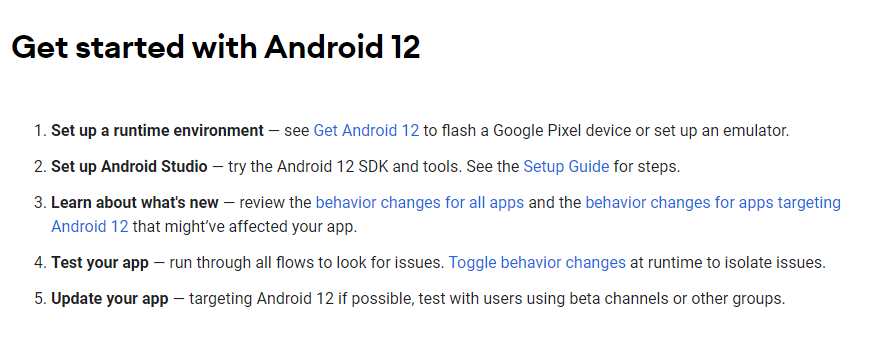Knowing Android versions is important. Since Android is one of the most popular mobile operating systems in the world, it is used by millions of people on a daily basis and is known for its flexibility, customization options, and ease of use. Android has gone through many versions since its initial release in 2008, with each version bringing new features and improvements to the platform. In this article, we will explore the history of Android versions and the features that each Android versions introduced.
Different Android versions:
Android 1.0
Android 1.0 was the first version of Android versions that was released in 2008. It was designed for use on mobile devices and included basic features such as a web browser, email client, and support for Google Maps. Android 1.0 also introduced the use of widgets, which allowed users to place small applications on their home screens for quick access.
Android 1.5 Cupcake
Android 1.5 Cupcake is one of the Android versions that was released in 2009 and introduced several new features to the platform. One of the most notable features was the ability to record and playback video, which was not available in the previous version. Cupcake also introduced support for third-party keyboards, which allowed users to customize their typing experience.
Android 1.6 Donut
Android 1.6 Donut is another one of Android versions that was released in 2009 and introduced several new features to the platform. One of the most notable features was the introduction of the Quick Search Box, which allowed users to quickly search for content on their devices or the internet. Donut also introduced support for different screen sizes and resolutions, which allowed Android to be used on a wider range of devices.
Android 2.0/2.1 Éclair
Android 2.0/2.1 Éclair was released in 2009/2010 and introduced significant improvements to the platform. One of the most notable features was the introduction of Google Maps Navigation, which provided turn-by-turn directions and voice guidance. Éclair also introduced support for multiple accounts on a single device and improved the overall performance and speed of the platform.
Android 2.2 Froyo
Android 2.2 Froyo was released in 2010 and introduced several new features to the platform. One of the most notable features was the introduction of support for Adobe Flash, which allowed users to access Flash content on their mobile devices. Froyo also introduced support for Wi-Fi hotspot functionality, which allowed users to share their device’s data connection with other devices.
Read also: 10 Tips to reduce data usage on Android Easily
Read also: Facebook Live from Android apps
Android 2.3 Gingerbread
Android 2.3 Gingerbread was released in 2010 and introduced several new features to the platform. One of the most notable features was the introduction of support for Near Field Communication (NFC), which allowed users to make payments and exchange data with other NFC-enabled devices. Gingerbread also introduced support for video calling and improved the overall performance and speed of the platform.
Android 3.0/3.1 Honeycomb
Android 3.0/3.1 Honeycomb was released in 2011 and was the first version of Android that was designed specifically for use on tablets. Honeycomb introduced several new features that were optimized for tablet use, such as a redesigned user interface and support for multiple home screens. Honeycomb also introduced support for hardware acceleration, which improved the performance of graphics-intensive applications.
Android 4.0 Ice Cream Sandwich
Android 4.0 Ice Cream Sandwich was released in 2011 and introduced significant improvements to the platform. One of the most notable features was the introduction of the Holo design language, which provided a modern and consistent user interface across all Android devices. Ice Cream Sandwich also introduced support for facial recognition technology and improved the overall performance and speed of the platform.
Android 4.1/4.2/4.3 Jelly Bean
Another edition of Android versions was Android 4.1/4.2/4.3 Jelly Bean that was released in 2012/2013 and introduced several new features to the platform. One of the most notable features was the introduction of Google Now, which provided personalized information to users based on their search history and location. Jelly Bean also introduced support for multiple user profiles on a single device and improved the overall performance and speed of the platform.
Android 4.4 KitKat

Android 4.4 KitKat was one of the most important Android versions that was released in 2013 and introduced several new features to the platform. One of the most notable features was the introduction of a new dialer interface that allowed users to search for contacts directly from the dialer. KitKat also introduced support for Google Cloud Print and improved the overall performance and speed of the platform.
Android 5.0/5.1 Lollipop
Android 5.0/5.1 Lollipop was released in 2014 and introduced significant improvements to the platform. One of the most notable features was the introduction of Material Design, which provided a modern and consistent user interface across all Android devices. Lollipop also introduced support for multiple user accounts on a single device and improved the overall performance and speed of the platform.
Android 6.0 Marshmallow
Android 6.0 Marshmallow was released in 2015 and introduced several new features to the platform. One of the most notable features was the introduction of the Doze mode, which improved battery life by putting the device into a deep sleep state when it was not in use. Marshmallow also introduced support for fingerprint sensors and improved the overall performance and speed of the platform.
Android 7.0/7.1 Nougat
Android 7.0/7.1 Nougat was released in 2016 and introduced several new features to the platform. One of the most notable features was the introduction of split-screen mode, which allowed users to use two apps side-by-side. Nougat also introduced support for app shortcuts and improved the overall performance and speed of the platform.
Android 8.0/8.1 Oreo
Android 8.0/8.1 Oreo was released in 2017 and introduced several new features to the platform. One of the most notable features was the introduction of Picture-in-Picture mode, which allowed users to watch videos while doing other tasks on their devices. Oreo also introduced support for notification channels, which allowed users to customize the way they receive notifications from different apps.
Android 9.0 Pie
Android 9.0 Pie was released in 2018 and introduced several new features to the platform. One of the most notable features was the introduction of Digital Wellbeing, which provided tools and insights to help users manage their device usage. Pie also introduced support for gesture-based navigation and improved the overall performance and speed of the platform.
Android 10
Android 10 was released in 2019 and introduced several new features to the platform. One of the most notable features was the introduction of a system-wide Dark Mode, which provided a dark theme across all apps and system menus. Android 10 also introduced support for foldable devices and improved the overall performance and speed of the platform.
Android 11
Android 11 was released in 2020 and introduced several new features to the platform. One of the most notable features was the introduction of Chat Bubbles, which allowed users to access messaging conversations from any screen on their device. Android 11 also introduced support for wireless Android Auto, improved privacy controls, and improved the overall performance and speed of the platform.
Android 12

Android 12 is the latest version of Android versions that was released in 2021. It introduced several new features to the platform, such as a new design language called Material You, which provides more personalized and customizable user interface elements. Android 12 also introduced support for haptic-coupled audio, which allows users to feel vibrations in response to audio, and improved privacy controls.
Conclusion
Android has come a long way since its initial release in 2008. Each one of the Android versions has introduced new features and improvements that have made the platform more powerful, flexible, and user-friendly. From the introduction of widgets in Android 1.0 to the personalized user interface elements in Android 12, Android has constantly evolved to meet the needs of its users. As Android continues to evolve and improve, we can expect to see even more innovative and useful features in the future from the next Android versions.


